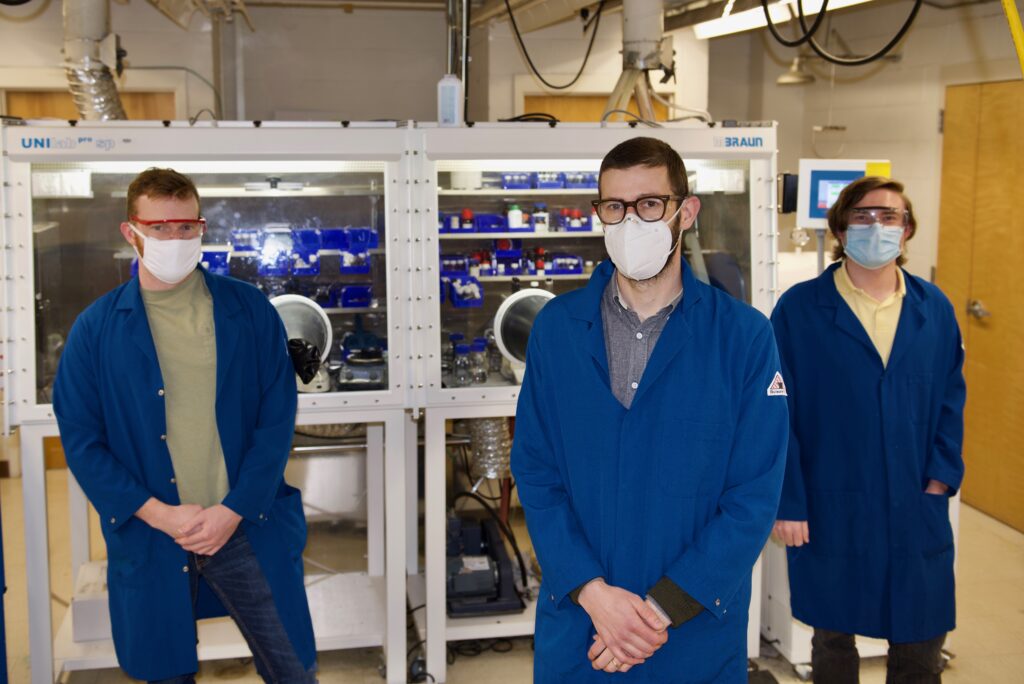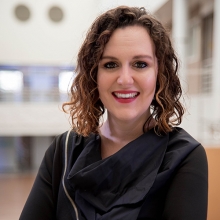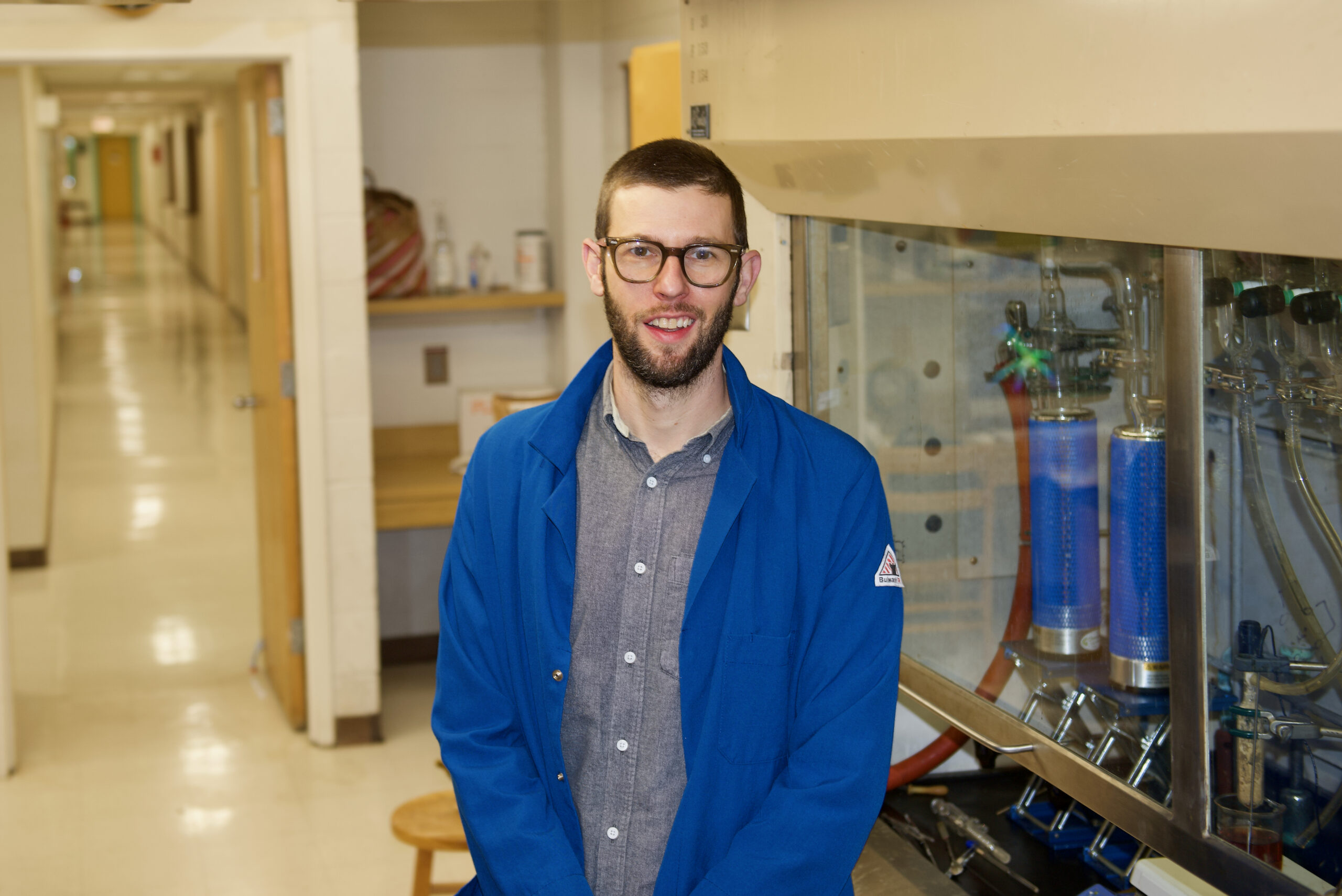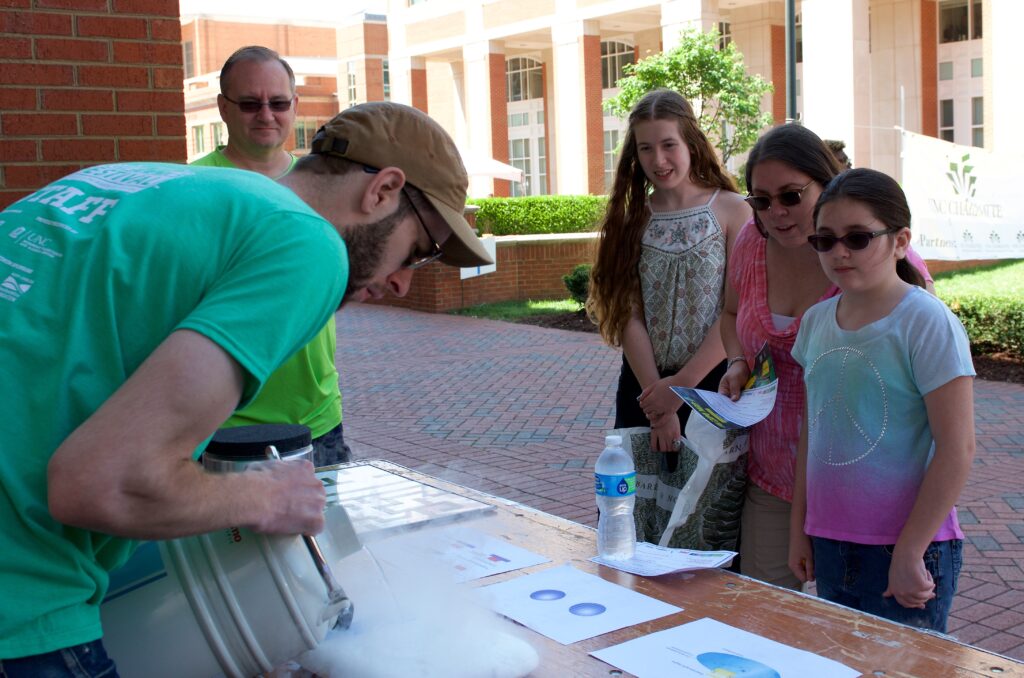With demand growing for renewable energy and for novel energy storage options, UNC Charlotte chemist Christopher Bejger is conducting innovative research that holds promise for new solutions.
To support his research, Bejger this spring received a National Science Foundation Faculty Early Career Development Program (CAREER) award. CAREER awards are the NSF’s most prestigious awards in support of early-career faculty who have the potential to serve as academic role models in research and education and to lead advances in the mission of their department or organization. Bejger’s anticipated funding is $624,000 through 2026.
The CAREER award work will focus on developing a new class of metal-organic frameworks made up of transition metal chalcogenide (TMC) molecular clusters. The proposed frameworks are relevant to the study of high surface nanoelectronics and future charge storage devices.
The research offers a new synthetic approach, constructing porous crystalline frameworks from TMC cluster building blocks. Bejger describes the work as constructing multidimensional materials using nanoscale building blocks.
The CAREER award follows on the heels of a previous National Science Foundation award of $456,394 in April 2020.
Broadly speaking, Bejger’s various research efforts center on developing hybrid materials for energy applications and investigating new compounds for energy storage.
Bejger Research Group Drives Innovation In Renewable Energy
“We need to integrate renewable energy sources into the energy grid to transition away from fossil fuels,” Bejger says. “But because renewable energy sources are intermittent, storage devices are required to power the grid when the sun isn’t shining or the wind isn’t blowing. In my lab, we’re using organic chemistry to prepare molecules that can operate in salt water and can be used to make safe, economical, and more efficient batteries.”
To start with the basics, here’s a quick battery lesson from Bejger.
A redox flow battery uses chemicals that are dissolved in a solution. “The chemicals are pumped through a system you can charge up when you pump the chemicals one direction and then store them in a tank,” he says. “And then later, you can pump the solution back in the opposite direction, and the chemicals inside release their charge.”
While redox flow batteries have been around since the 1960s, they present significant issues. They traditionally use expensive metals, such as vanadium. The systems usually use a highly corrosive solution like sulfuric acid to dissolve the vanadium. They are usually pretty big systems, meaning space can be an issue.
In contrast, the Bejger Research Group’s work is forging a revolutionary approach focused on solutions that are less expensive and greener.
“What we’re using in our research are organic molecules, consisting of only carbon, hydrogen, oxygen, and nitrogen,” Bejger says. “You can actually tune the molecules, so you can increase the solubility. You can change some of their properties so that you can get higher voltages or more than one electron so that you could hold more charge.”
The molecules operate at pH 7. That means they can operate in pure, or neutral, water, which has neither acidic nor basic qualities.
“There really are very few organic molecules that can work in long-term energy storage flow batteries,” Bejger says. “The majority of them still do not work at neutral pH. What we are using is just regular water. If you have a battery in water, commonly you need an electrolyte, so you have low resistance in your battery. So, ours actually work with just regular salt as that electrolyte.”
Bejger, an assistant professor in the Department of Chemistry, joined UNC Charlotte’s faculty in 2015, after a stint as a Camille and Henry Dreyfus Environmental Chemistry Postdoctoral Fellow at Columbia University. He earned a bachelor’s degree in chemistry from the University of Oregon and a doctoral degree in chemistry from the University of Texas in 2012. During his graduate studies, he was a Seaborg Graduate Fellow at Los Alamos National Laboratory from 2010-2012.

Bejger started his UNC Charlotte lab with one master’s degree student, Jessica Shott, and one undergraduate student, Matthew Freeman, who stayed with the lab through the completion of a master’s degree in chemistry.
They laid the initial foundation for the lab’s work, starting with molecular cluster research.
“They’re like little nano spheres that also have this ability to hold electrons,” Bejger says. “But what was interesting about those is that they can hold one, two or three electrons. So you’re starting to get into the position where you can put a lot of electrons into one molecule and take them out and put them back in without disturbing the molecule in any way.”
In this early work, Bejger saw potential for the molecular clusters to act as energy storage materials that could store more than one electron, which would be efficient.
The team published their findings, but they also hit limitations because the material was just too heavy, and it would not dissolve enough in the solution to store enough energy to be practical. Nick Turner, who is a degree candidate in the master’s program in Chemistry, joined the team early on, and other students applied as research associates.
Bejger and the students tinkered with smaller and smaller molecules. They began working with a class of compounds called radialenes, which are star-shaped organic molecules. They found the molecules worked well in water, which led to the research proposal that the NSF funded in 2020. The research team has produced a number of papers, including one that was featured on the front cover of Chemistry A European Journal.
The early success working with undergraduate students led Bejger to include undergraduate components in his first project funded by the NSF in 2020. Working with faculty colleagues Mitchell Anstey of Davidson College and Todd Coolbaugh of Johnson C. Smith University, the project is focusing on research into radialene molecules.
The three-institution team is planning to build an interactive exhibit on redox flow batteries to expand awareness of grid-scale renewable energy storage. Students involved in the research will work across the institutions with faculty members and a regional industry partner. While COVID-19 restrictions have shifted some of the work, the outreach and student research are slated for this coming year.
“We decided that it would be really cool to build an actual working prototype of one of these batteries on a small scale that we could take to local schools and teach people about this type of energy storage technology,” Bejger says.

The CAREER award efforts also will include substantial involvement by students and the community. Bejger and chemistry students will work with architecture assistant professor Rachel Dickey and architecture students to design and build an interactive Nanoscale Materials Pop Up Museum to communicate chemistry and nanoscale science at community events, schools and other opportunities. Bejger and Dickey plan to work with the Charlotte Teachers Institute on a Summer Research Experience for Teachers, with a handful of teachers immersed in the work. With CTI, they plan to also co-lead a seminar for a group of Charlotte-Mecklenburg Schools teachers called “Design Matters.”
Particularly as an early career faculty member, Bejger has called upon the extensive expertise and collaborative spirit at UNC Charlotte, especially in his home department.
“In a lot of ways I don’t know if this project could have worked, if I wasn’t lucky enough to start my career here,” he says. “I am more of a synthetic chemist, and I’m not an expert in energy storage or even in electrochemistry, which is the study of how molecules can be charged and discharged and how they behave electronically. But it just happens that in this department, there are a lot of faculty that are electrochemists by training.”
Another colleague, Dan Jones, has been in the department perhaps longer than any other faculty member, and is an x-ray crystallographer, which is another specialty area that has benefitted Bejger’s work.
Chemistry Master’s Degree Program Brings Talent Into Bejger’s Lab
The intensive chemistry master’s degree program has been essential to the work, Bejger says. “We are unique at UNC Charlotte, because we have a research based chemistry master’s program where students can come and really focus on research for two years and write a thesis at the end of that. That’s helped me design projects that can be completed by master’s students.”
Communicating with non-chemists and students who are not chemistry majors about his field and his research is important to Bejger. While he certainly aspires to solve world problems with applied research, he also finds time for exploration and reflection.
“In my lab, we want to kind of be nerds and look at all the weird chemistry of new materials and be fascinated and discover things serendipitously,” he says. “But we also want to solve problems. It’s important to understand that chemistry is important to solving a lot of the world’s problems.”
Yet, the architecture and design of the materials he makes inspire him, and – he hopes – others around him.
“I’ve always been fascinated by the beauty and the aesthetics of chemistry and the design aspects of synthesis,” he says. “Some people are really interested in the real difficult math and analytical nature of chemistry. But I’ve always been more attracted to the artistic and inspired design elements of chemistry. And that’s what we’re trying to do.”
Words and Images: Lynn Roberson, CLAS Communications Director










